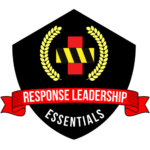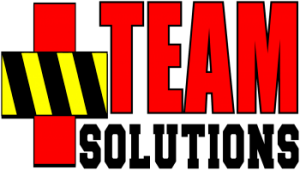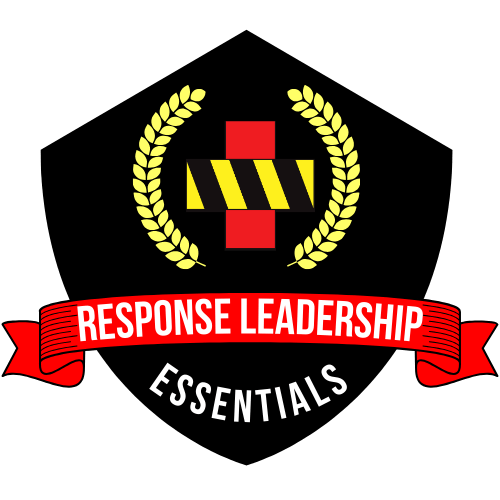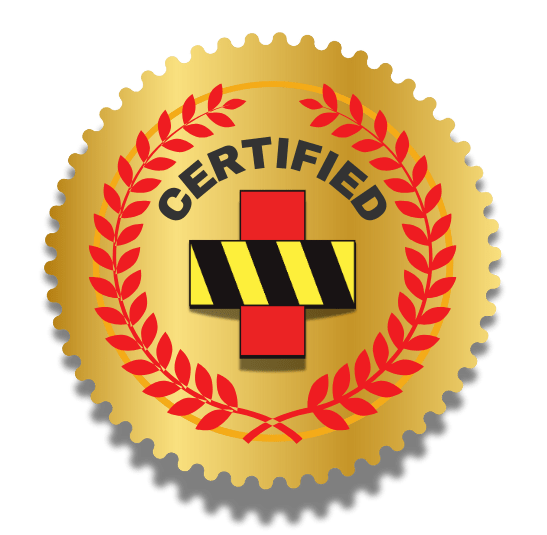Introduction: Leadership 24/7/365
"Shi Paku" is a Japanese term that describes a rare stress reaction where the sclera (whites of the eyes) becomes visible above and below the iris. This stark visual manifestation symbolizes the extreme stress experienced during personal crises or organizational chaos. As a Response Leader, your primary objective is to maintain resilience under pressure. Leading others effectively hinges on your ability to lead yourself, particularly when navigating the unpredictable terrain of crises. This guide serves as your roadmap to mastering Response Leadership – before, during, and after the challenge.

What is Response Leadership?
Response Leadership transcends traditional leadership models. It encompasses the ability to guide oneself and others through crises of varying scales and complexities.
This requires a unique blend of competence, unwavering confidence, and the ability to comprehend the situation while under immense pressure.
True leaders are not defined by their ability to avoid challenges, but by their unwavering commitment to facing them head-on when others retreat.

Key Traits of Effective Response Leaders:
- Preparation: Proactive identification and anticipation of potential risks and challenges. This involves continuous situational awareness and a proactive approach to risk management.
- Risk Identification: Develop a comprehensive understanding of the organization's internal and external environment. Analyze potential threats, such as natural disasters, cyberattacks, pandemics, economic downturns, and reputational crises. Utilize tools like SWOT analysis, PESTLE analysis, and threat modeling to identify and assess potential risks.
- Scenario Planning: Develop and regularly update crisis response plans for various scenarios. These plans should outline roles and responsibilities, communication protocols, resource allocation strategies, and decision-making processes. Include scenarios for low-probability, high-impact events to ensure comprehensive preparedness.
- Continuous Improvement: Regularly review and update risk assessments and response plans to reflect changing circumstances and emerging threats. Conduct tabletop exercises and simulations to test plans and identify areas for improvement.
- Decisiveness: The capacity to make critical decisions swiftly and effectively, even with limited information and under immense time pressure. This requires a balance of decisiveness and thoughtful consideration.
- Information Gathering: Gather information from multiple sources, including team members, subject-matter experts, and external sources, to gain a comprehensive understanding of the situation. Utilize data analytics, social media monitoring, and other tools to gather and analyze information quickly and effectively.
- Critical Thinking: Analyze information objectively, identify key issues, and evaluate potential options and their potential consequences. Utilize critical thinking frameworks, such as the decision matrix, the pros and cons analysis, and the SWOT analysis, to weigh options and make informed choices.
- Embrace Uncertainty: Accept that uncertainty is inherent in crisis situations. Make decisions based on the best available information, but be prepared to adapt and adjust as the situation evolves.
- Decisive Action: Once a decision is made, communicate it clearly and concisely to the team and execute the plan with speed and efficiency.
- Empathy: The ability to understand and share the feelings of others, fostering a supportive and compassionate environment for the team during times of duress.
- Active Listening: Actively listen to the concerns and perspectives of team members, stakeholders, and affected individuals. Demonstrate empathy and understanding for their feelings and experiences.
- Emotional Support: Provide emotional support and encouragement to team members who may be experiencing stress, anxiety, or trauma. Offer access to mental health resources and support services.
- Foster a Culture of Care: Create a supportive and inclusive work environment where team members feel valued, respected, and supported. Prioritize employee well-being and ensure that their needs are addressed during and after a crisis.
- Clarity: Clear and concise communication is paramount in high-stakes situations. Effective leaders must be able to convey information accurately and succinctly to their team, stakeholders, and the public.
- Effective Communication Channels: Utilize a variety of communication channels, including face-to-face meetings, video conferencing, email, text messaging, and social media, to ensure timely and effective communication. Establish clear communication protocols and designate communication points of contact.
- Clear and Concise Messaging: Develop and deliver clear, concise, and consistent messages to all stakeholders. Avoid jargon and technical terms that may be difficult to understand. Use plain language and visual aids to convey information effectively.
- Active Listening and Feedback: Encourage open and honest communication and actively seek feedback from stakeholders to ensure that messages are being received and understood. Address any concerns or misunderstandings promptly and effectively.
- Adaptability: The ability to quickly adjust plans and strategies in response to changing circumstances. Crises are dynamic events, and leaders must be able to adapt their approach as the situation evolves.
- Flexibility and Agility: Be prepared to adjust plans and strategies as needed based on new information and changing circumstances. Remain flexible and agile in your approach to the crisis.
- Continuous Monitoring: Continuously monitor the situation and identify emerging trends and challenges. Utilize data analytics, social media monitoring, and other tools to track the progress of the response effort and identify any potential issues.
- Embrace Change: View change as an opportunity for learning and improvement. Encourage innovation and experimentation in response to new challenges.
- Integrity: Maintaining ethical and moral standards in all decisions and actions, even under immense pressure. Building and maintaining trust is crucial during a crisis.
- Transparency and Honesty: Be transparent and honest with all stakeholders, acknowledging uncertainties and limitations. Build trust by being open and forthright in your communication.
- Ethical Decision-Making: Make decisions based on ethical principles and a commitment to fairness and justice. Consider the potential impact of your decisions on all stakeholders.
- Accountability: Take responsibility for your actions and decisions, and be accountable to your team, stakeholders, and the public.
- Humility: Acknowledging limitations and seeking guidance when necessary. No one person can handle a crisis alone. Effective leaders recognize the value of teamwork and collaboration.
- Seek Guidance and Expertise: Don't hesitate to seek guidance and expertise from subject-matter experts, mentors, and other trusted advisors.
- Delegate Effectively: Delegate tasks and responsibilities appropriately to empower team members and leverage their skills and expertise.
- Teamwork and Collaboration: Foster a collaborative environment where team members work together effectively to achieve common goals. Encourage open communication, shared decision-making, and mutual support among team members.

The Foundation of Response Leadership:
Cultivating a Leader's Mindset
Before delving into specific strategies and techniques, it's crucial to understand the foundational elements of a leader's mindset:
- Growth Mindset: Embrace challenges as opportunities for learning and growth. View setbacks as temporary obstacles, not permanent failures. Cultivate a thirst for continuous improvement and a willingness to step outside your comfort zone.
- Embrace Continuous Learning: Engage in continuous learning through reading, attending workshops, and seeking out new experiences.
- Seek Feedback and Constructive Criticism: Actively solicit and embrace feedback from others to identify areas for improvement.
- Experiment and Innovate: Be willing to experiment with new approaches and strategies to address challenges.
- Develop a Learning Agility: Be adaptable and flexible in your learning approach. Be willing to unlearn old habits and acquire new skills as needed.
- Emotional Intelligence: Develop self-awareness and the ability to manage your own emotions effectively. Understand how your emotions impact your decision-making and communication. Cultivate empathy and build strong relationships with your team.
- Self-awareness: Recognize your own strengths and weaknesses, values, and triggers. Understand how your emotions and behaviors impact those around you. Practice self-reflection and introspection to gain a deeper understanding of yourself.
- Self-regulation: Manage your emotions effectively, such as stress, anger, and frustration, in high-pressure situations. Develop healthy coping mechanisms for stress, such as mindfulness, meditation, and exercise.
- Social awareness: Understand and consider the perspectives and emotions of others. Develop empathy and compassion for those affected by the crisis.
- Relationship management: Build and maintain strong, trusting relationships with your team members, stakeholders, and other key individuals.
- Active listening: Practice active listening to understand the perspectives and concerns of others.
- Empathetic communication: Communicate with empathy and compassion, acknowledging the feelings and experiences of others.
- Building trust: Build trust and rapport with your team members by demonstrating integrity, honesty, and respect.
- Resilience: Develop the mental and emotional fortitude to withstand adversity. Learn to bounce back from setbacks, maintain a positive outlook, and persevere through challenging situations.
- Develop coping mechanisms: Learn healthy coping mechanisms for stress, such as exercise, mindfulness, and spending time in nature.
- Practice self-care: Prioritize physical and mental well-being through adequate sleep, nutrition, and exercise.
- Seek support: Don't hesitate to seek support from mentors, colleagues, friends, or family members when needed.
- Maintain a Positive Mindset: Cultivate a positive and optimistic outlook, even in the face of adversity. Focus on solutions and opportunities for growth.
- Humility: Acknowledge your limitations and be open to learning from others. Be willing to seek guidance, accept constructive criticism, and delegate effectively.
- Value diverse perspectives: Seek input from a variety of sources and perspectives to ensure a comprehensive understanding of the situation.
- Empower your team: Delegate tasks effectively and empower team members to take ownership of their roles and responsibilities.
- Provide clear expectations and support: Clearly define roles, responsibilities, and performance expectations.
- Foster a culture of empowerment: Encourage team members to take initiative, make decisions, and solve problems independently.
- Provide necessary resources and support: Ensure that team members have the resources, tools, and support they need to succeed.
- Learn from mistakes: Conduct thorough after-action reviews to identify and learn from both successes and failures.
- Gather feedback: Collect feedback from team members, stakeholders, and other relevant parties to gain a comprehensive understanding of the response effort.
- Analyze data and information: Analyze data from the crisis, such as incident reports, communication logs, and performance evaluations, to identify areas for improvement.
- Implement corrective actions: Develop and implement corrective actions to address identified shortcomings and prevent future occurrences.

How to Train as a Response Leader
1. Transcending Leadership Memes:
Inspirational quotes and motivational slogans may provide a temporary boost, but they lack the depth and actionable strategies required to forge true leadership. Effective leadership demands a practical, results-oriented approach.
- "Be the leader you would follow" is a powerful statement, but it lacks specific guidance on how to lead under the immense pressure of a crisis.
- Leadership memes and superficial advice often oversimplify complex challenges, failing to address the nuanced realities of crisis leadership. They often focus on generic leadership principles rather than the specific demands of crisis response.
2. The Value of Deep Dive Learning:
While books like Sun Tzu's The Art of War offer timeless wisdom on strategy and leadership, they may not provide the concrete, step-by-step implementation strategies needed for modern-day crisis response.
- Specialized resources: Organizations like TEAM Solutions offer actionable guides like The Response Leadership Sequence™, providing clear frameworks for navigating crises effectively.
- Case studies: Analyzing real-world crisis situations can provide valuable insights into the decision-making processes of successful leaders, their successes, and their failures.
- Study historical crises: Analyze how leaders responded to past crises, such as natural disasters, pandemics, and terrorist attacks.
- Examine successful and unsuccessful responses: Identify the key factors that contributed to successful outcomes and the critical errors that led to negative consequences.
- Conduct case study analyses: Analyze specific case studies in detail, identifying the key challenges faced by leaders, the strategies they employed, and the lessons learned.
3. The Limitations of Traditional Training:
- University-based programs: While prestigious institutions offer valuable leadership certificates, their focus often lies on general leadership principles and soft skills, potentially neglecting the specific demands of crisis leadership. Furthermore, the high costs associated with these programs can be prohibitive for many aspiring leaders.
- In-person training: Options like FEMA-funded programs and private sector workshops can be valuable but often suffer from rigidity in their delivery, high costs, and limited scope. These programs may not always be readily accessible to individuals with limited time or resources.
4. The Rise of Online Learning:
- Accessibility and Flexibility: Online learning platforms offer increased accessibility and flexibility, allowing individuals to learn at their own pace and on their own schedule. This is particularly beneficial for busy professionals who may not have the time or flexibility to attend in-person training sessions.
- Quality and Depth: The quality of online courses varies significantly. Some courses lack depth or reuse outdated material.
- TEAM Solutions' Approach: With a focus on cutting-edge online training since 2011, TEAM Solutions delivers high-quality, crisis-focused leadership training specifically designed for leaders navigating complex challenges. Our courses are developed and delivered by experienced responders with decades of real-world experience in crisis management.

Take the Next Step: Become a Certified Response Leader
If this guide resonates with you - if you're ready to lead with clarity, coordinate under pressure, and bring order to chaos - then the Response Leadership Essentials Certification (RLESS) program is your next step.
Built on the principles of this guide and powered by the proven Response Leadership Sequence™, this 100% online certification provides:
Whether you're preparing to step into a leadership role or want to solidify your impact during high-pressure operations, RLESS equips you to lead decisively - with confidence, clarity, and purpose.
The TEAM Solutions Difference: For Crisis Leaders, By Crisis Leaders
TEAM Solutions' training programs are developed and delivered by experienced responders with decades of real-world experience in crisis management. We focus on providing actionable training that equips leaders with the skills and knowledge they need to effectively navigate high-pressure situations. Click here or the image below to learn more.
Key Benefits of TEAM Solutions Training:
- Strategic Frameworks: Learn and apply practical frameworks for managing crises effectively, such as The Response Leadership Sequence™. This proven framework provides a structured approach to crisis management, covering all phases of the crisis lifecycle.
- Confidence Under Pressure: Develop the confidence and composure to lead decisively and effectively in high-stakes situations. Through simulations and real-world scenarios, our training helps you develop the mental and emotional resilience to thrive under pressure.
- Enhanced Team Coordination: Learn strategies for effectively inspiring, organizing, and coordinating teams during a crisis. Our training emphasizes the importance of teamwork, communication, and collaboration in successful crisis response.
- Professional Growth: Access certification pathways aligned with industry standards, demonstrating your commitment to professional development.
Key Components of Response Leadership
1. Pre-Crisis Preparation: The Foundation of Success

Risk Assessment: Conduct thorough risk assessments to identify potential threats and vulnerabilities. This includes analyzing internal and external factors, such as natural disasters, cyberattacks, reputational crises, and pandemics.
- Utilize risk assessment tools and methodologies: Employ a variety of tools and techniques, such as SWOT analysis, FMEA (Failure Mode and Effects Analysis), and threat modeling, to systematically identify and evaluate potential risks.
- Involve key stakeholders: Engage with employees at all levels, customers, suppliers, and other relevant stakeholders in the risk assessment process to gain diverse perspectives and ensure comprehensive coverage.
- Prioritize risks: Focus on the most critical risks based on their likelihood and potential impact. Develop a prioritized risk register to guide decision-making and resource allocation.
Strategic Planning: Develop comprehensive response plans using proven frameworks like The Response Leadership Sequence™. This involves defining roles and responsibilities, establishing communication protocols, and outlining clear decision-making processes.
- Develop clear objectives and goals: Define specific, measurable, achievable, relevant, and time-bound (SMART) objectives for the response plan.
- Establish clear lines of authority and communication: Define roles and responsibilities for each team member and establish clear communication channels to ensure effective coordination and information flow.
- Incident Command System (ICS): Implement ICS or a similar standardized incident command system to ensure clear lines of authority and effective communication during a crisis.
- Communication Plans: Develop comprehensive communication plans for internal and external stakeholders, outlining key messages, communication channels, and points of contact.
- Develop a comprehensive communication plan: Outline how information will be communicated internally and externally during a crisis, including messaging, channels, and key stakeholders.
Training and Exercises: Conduct regular training exercises and simulations to prepare your team for potential crises. This allows individuals to practice their skills, identify areas for improvement, and build confidence in their ability to respond effectively.
- Tabletop exercises: Simulate crisis scenarios in a controlled environment to test response plans and identify potential bottlenecks.
- Functional exercises: Test specific functions of the response plan, such as communication systems, resource allocation, and incident command procedures.
- Full-scale exercises: Conduct large-scale simulations that involve multiple agencies and organizations to test interagency coordination and resource mobilization.
- After-Action Reviews (AARs): Conduct thorough AARs after each exercise to identify lessons learned and areas for improvement.
2. Leadership During a Crisis: Leading with Clarity and Confidence

Decisive Action: Lead with clarity and purpose, even when faced with incomplete information and rapidly evolving circumstances.
- Gather and analyze information: Quickly gather and analyze information from multiple sources to gain a comprehensive understanding of the situation. Utilize data analytics, social media monitoring, and other tools to gather and analyze information quickly and effectively.
- Make informed decisions: Base decisions on the best available information, considering the potential risks and consequences of each option. Utilize decision-making frameworks, such as the decision matrix, to weigh options and make informed choices.
- Communicate decisions clearly and concisely: Ensure that all team members and stakeholders understand the decisions made and the rationale behind them.
Effective Communication: Maintain open and transparent communication with your team, stakeholders, and the public.
- Establish clear communication channels: Utilize a variety of communication channels, such as email, phone, text messaging, and social media, to ensure timely and effective communication.
- Provide regular updates: Keep stakeholders informed of the situation and the progress of the response efforts.
- Be honest and transparent: Acknowledge uncertainties and limitations while maintaining a sense of calm and confidence.
- Manage public perception: Develop and implement a public relations strategy to effectively communicate with the public and manage public perception during a crisis.
Resource Management:
- Allocate resources effectively: Ensure that resources are allocated efficiently and effectively to support the response effort.
- Monitor resource utilization: Track the use of resources and make adjustments as needed to ensure that resources are used effectively and efficiently.
- Coordinate resource requests: Work with other agencies and organizations to coordinate resource requests and ensure that resources are available when needed.
- Build and maintain relationships with external partners: Establish and maintain strong relationships with other agencies, such as law enforcement, fire departments, emergency medical services, and other relevant organizations.
- Utilize mutual aid agreements: Leverage mutual aid agreements to access resources from other jurisdictions when needed.
3. Post-Crisis Leadership: Learning and Improving
Debriefing and Analysis: Conduct thorough after-action reviews (AARs) to identify lessons learned and areas for improvement.
- Gather feedback from all stakeholders: Collect feedback from team members, other agencies, and affected individuals to gain a comprehensive understanding of the response effort.
- Analyze data and information: Analyze data from the crisis, such as incident reports, communication logs, and performance evaluations, to identify areas for improvement.
- Identify root causes: Investigate the root causes of any problems or shortcomings identified during the AAR.
Recovery Planning: Develop and implement a recovery plan to assist affected individuals and communities in returning to normalcy.
- Provide support services: Provide necessary support services to affected individuals, such as counseling, financial assistance, and housing assistance.
- Rebuild and restore infrastructure: Assist in the rebuilding and restoration of damaged infrastructure, such as roads, bridges, and utilities.
- Support community recovery: Support community recovery efforts by providing resources and assistance to local businesses and organizations.
Legacy Building: Strengthen organizational resilience for the future.
- Implement corrective actions: Implement corrective actions to address any shortcomings identified during the AAR.
- Update response plans: Update response plans based on lessons learned from the crisis.
- Conduct ongoing training and exercises: Continue to conduct regular training exercises and simulations to maintain and enhance team readiness.
- Foster a culture of continuous improvement: Create a culture of continuous learning and improvement within the organization.
The Importance of Self-Care for Response Leaders
Leading during a crisis can be incredibly demanding and stressful. It is crucial for response leaders to prioritize their own self-care to maintain their physical and mental well-being.
- Prioritize physical health: Maintain a healthy lifestyle through regular exercise, proper nutrition, and adequate sleep.
- Practice stress management techniques: Utilize stress management techniques such as mindfulness, meditation, and deep breathing exercises.
- Seek support: Don't hesitate to seek support from mentors, colleagues, friends, or family members when needed.
- Take breaks: Take regular breaks throughout the day to recharge and avoid burnout.
The Role of Technology in Response Leadership

Technology plays an increasingly important role in crisis response.
Communication and Collaboration Tools: Utilize technology for effective communication and collaboration among team members, stakeholders, and other agencies.
- Video conferencing and virtual meetings: Facilitate communication and collaboration among geographically dispersed teams.
- Project management software: Utilize project management software to track progress, manage tasks, and coordinate resources.
- Social media: Utilize social media platforms to communicate with the public, gather information, and monitor the situation.
Data Analytics and Predictive Modeling: Utilize data analytics and predictive modeling to anticipate and respond to emerging threats.
Artificial Intelligence (AI): Leverage AI-powered tools for tasks such as risk assessment, situation awareness, and resource allocation.
The Future of Response Leadership
The landscape of crisis response is constantly evolving. Emerging technologies, such as artificial intelligence and blockchain, are transforming the way we respond to crises.
The rise of artificial intelligence: AI is increasingly being used in crisis response for tasks such as:
- Predictive modeling: Predicting the likelihood and impact of future crises.
- Situation awareness: Monitoring real-time data to gain a better understanding of the situation.
- Resource allocation: Optimizing the allocation of resources during a crisis.
- Communication and coordination: Facilitating communication and coordination among different agencies and organizations.
The importance of ethical considerations: As technology plays an increasingly important role in crisis response, it is crucial to consider the ethical implications of its use.
- Data privacy and security: Ensure the privacy and security of sensitive data.
- Algorithmic bias: Avoid algorithmic bias and ensure that AI systems are fair and equitable.
- Human oversight: Maintain human oversight and control over AI systems.
Frequently Asked Questions
What is the Response Leadership Sequence™?
The Response Leadership Sequence™ is a practical framework for leading before, during, and after a crisis. It connects mindset, planning, execution, and recovery so leaders can make clear decisions under pressure and coordinate teams effectively.
Who should take the Response Leadership Essentials Certification (RLESS)?
RLESS is designed for people who must lead during disruption: incident and emergency managers, crisis and business continuity leaders, cyber/IT responders, operations managers, and anyone tasked with coordinating teams during high‑stakes events.
How is the training delivered?
It’s 100% online and self‑paced, built around micro‑courses, practical exercises, toolkits, downloadable job aids, and real‑world planning templates. Learners can progress on their own schedule and revisit modules as needed.
How is TEAM Solutions training different from FEMA or university programs?
FEMA and university programs provide valuable foundations, but can be generic or rigid. TEAM Solutions is mission‑tested and scenario‑driven, focusing on operational decision‑making, team coordination, and crisis recovery that leaders actually face under pressure.
Do I get a certificate when I finish?
Yes. Graduates receive a digital Response Leadership Essentials certificate documenting completion, suitable for professional portfolios and employer verification.
Conclusion
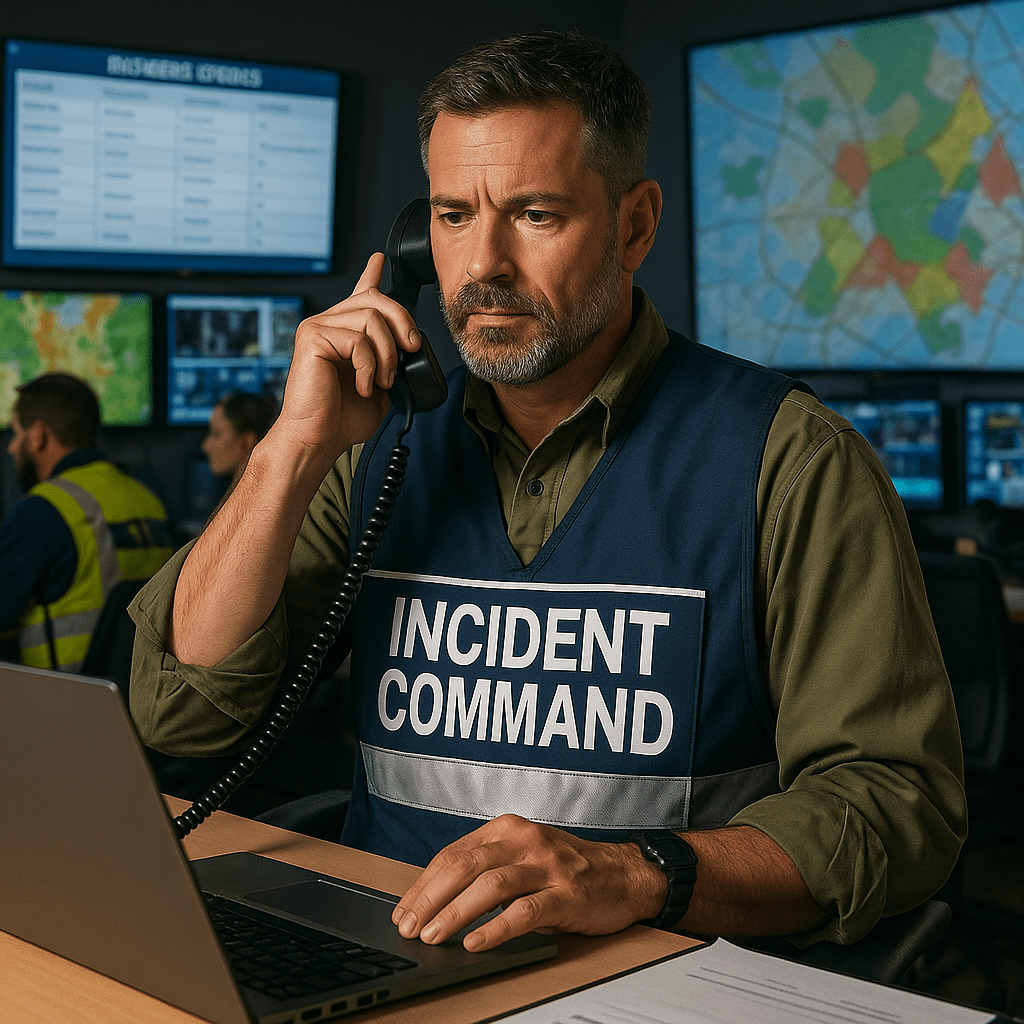
Response Leadership is a complex and multifaceted skill that requires a unique blend of knowledge, skills, and personal attributes.
By cultivating a strong leadership mindset, developing essential skills, and embracing continuous learning, individuals can become effective Response Leaders capable of guiding themselves and others through even the most challenging crises.
Remember: This is just a starting point for your journey to mastering Response Leadership. Continuous learning and adaptation are essential for success in this dynamic and ever-evolving field.
Click HERE to Revisit the
Response Leadership Essentials Certification Program.
